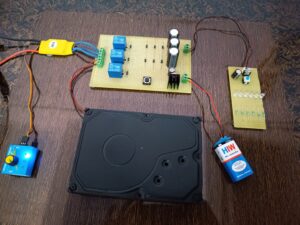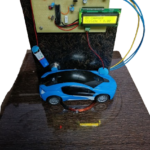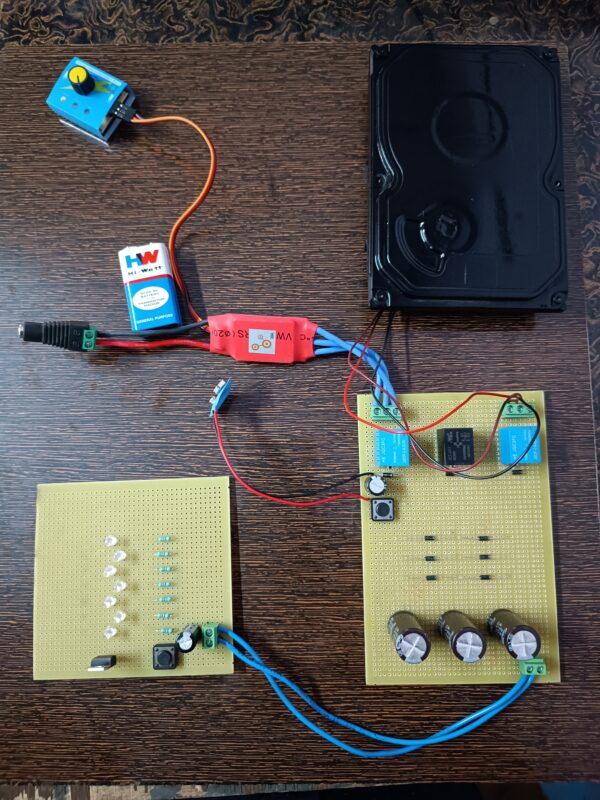Description


ABSTRACT
Regenerative braking system has always been a very important feature in all hybrid and full electric vehicles since it helps to improve on fuel economy, as well as conserve energy efficiency. Unlike conventional vehicles which apply the friction brake system and contribute to the loss of the kinetic energy in the form of heat energy and friction, regenerative braking can conserve the energy lost during braking. Issue is addressed as to why this project is carried out. There is a lack of regenerative braking performance study for a bench-testing prototyping stage in retrofit conversion of hybrid electric vehicles. Also, the current solution to implement a regenerative braking system in existing vehicle part is costly. In this project, alternatives are first, explored to design brake pedal assembly to detect brake pedal movement for regenerative braking. In order to achieve this, a linear potentiometer is selected. This is followed with the design of a voltage follower circuit to produce stable output voltage to the motor controller.
Then, configuration of the circuitry to the motor controller is learnt and set-up. Last part of the step covers the monitoring and experimentation of the performance for regenerative current by using the lab equipment. The bench-testing is done in free or zero-load condition. Results obtained showed a very little regenerative current being fed back into the battery when the brake pedal is exerted at its maximum, with respect to different motor speed run. Further work can be carried out to test the actual regenerative performance when the prototype is fully mounted into the vehicle.
As the basic law of Physics says energy can neither be created nor be destroyed it can only be converted from one form to another. During huge amount of energy is lost to atmosphere as heat. It will be good if we could store this energy somehow which is otherwise getting wasted out and reuse it next time we started to accelerate. Regenerative braking refers to a system in which the kinetic energy of the vehicle is stored temporarily, as an accumulative energy, during deceleration, and is reused as kinetic energy during acceleration or running. Regenerative braking is a small, yet very important, step toward our eventual independence from fossil fuels. These kinds of brakes allow batteries to be used for longer periods of time without the need to be plugged into an external charger.
These types of brakes also extend the driving range of fully electric vehicles. Regenerative braking is a way to extend range of the electric vehicles. In many hybrid vehicles cases, this system is also applied hybrid vehicles to improve fuel economy. A normal car is only about 20 percent efficient; meaning some 80 percent of the energy it expends is wasted as heat created by friction. Regenerative braking could reclaim as much as half of as that wasted energy, which equates into more motion produced by the fuel we are paying for instead of using that fuel to create heat that is being dissipated uselessly into the environment.
The limitation of regenerative is that it can only slow down the slow moving vehicle and for instant braking in order to bring vehicle into halt we use improved version of conventional braking in which we have inserted thermoelectric generator which uses the heat produce during fast braking and make electricity.
Layout Block and Working Principle

In the design of the overall regenerative braking system (RBS), there are several components involved. Initially, the relay brake design is involved, followed by the controller, the electric motor drives and finally the battery storage.. One of the criteria is that the brake must have the same physical position and contact as the conventional friction brake pedal for ergonomic purposes. Apart from that, the brake pedal must always maintain the current friction braking process, at the same time implementing the RBS feature as 6 well.
Parts:
- BLDC Motor
- Motor ESC
- Power supply
- Servo tester















FluxPrime –
https://www.google.com/maps/contrib/112977440227909780271?hl=en-US&ved=1t:31294&ictx=111